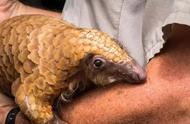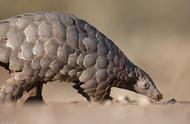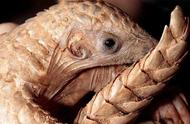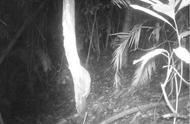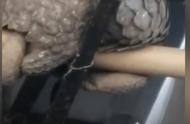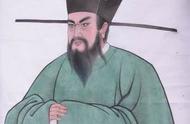
关注中国绿发会,订阅绿色未来
编者按:
我们熟悉的剑龙形象是一种带着尖刺的生物,它的尾巴和直立的角板不和脊椎相连。但这种重建是不确定的——目前从未发现过明确的剑龙残骸。没有人确切地知道剑龙的背上是如何安排骨板的。尽管已发现许多保存完好的标本,但从未发现过真正附着在骨架上的标本。一些古生物学家认为骨板平放在皮肤上,在背部和头部侧面形成防御。
这种替代观点十分具有意义。假设(1)这些骨板实际上是以重叠的方式平放在皮肤上(这可以提供更好的保护); (2)尖刺不在尾部,而是脚上的巨大爪子。这样的动物看起来会是怎么样?显然,它将会与现存的穿山甲非常相似。
穿山甲被归类为哺乳动物。然而,穿山甲腿的背部,头部侧面和外表面覆盖着类似于剑龙的骨板。穿山甲的骨板尺寸与身体尺寸的比例大致与剑龙和它的护甲板比例一样大。穿山甲的鳞片附着在皮肤上,而不是骨骼上,出于这个原因,人们不会在化石中发现骨板。骨板会在皮肤腐烂后脱落。目前已知的剑龙残骸同样也严重脱落,甚至无法确定它们具体有多少鳞片。所谓的剑龙的尾部的尖锐器官和体型大小的比例,实际与穿山甲的爪子和身体比例一样大。在重建假想的剑龙时,爪子的存在可能被误解为尾部的尖锐器官。
穿山甲的整体形式也类似于剑龙:拥有长尾巴,臀部是身躯的最高点,鼻子对向地面。肢体的比例也很相似。穿山甲的头骨与其他存在的哺乳动物的头骨几乎没有相似之处,但与剑龙相似。穿山甲没有牙齿,同样在大型剑龙中,颌骨也很脆弱,牙齿很小而无效。穿山甲使用胗来磨碎他们的食物。胗的存在通常不被认为是哺乳动物的特性,但穿山甲确实存在这种器官。各种类型的穿山甲分布在热带世界的大部分地区。来自北美的化石形态。被认为是穿山甲的化石可以追溯到古新世,在玄武岩中发现已灭绝的最大的穿山甲长约2米,同时已知最小的剑龙尺寸约2.5米。
然而,目前公认的理论认为穿山甲是由生活在白垩纪晚期的“小型原始的,分布很广的”胎盘哺乳动物进化而来,与恐龙无关。
另外大穿山甲是穿山甲科地穿山甲属的一种,分布于西非和中非湿润的森林地带,是现存体型最大的一种穿山甲,成年雄性体长可达1.4米,雌性约1.25米。主要以蚂蚁和白蚁为食。昼伏夜出。雌性每胎产仔一只。
编译/朱正学 审/Sophia 编/Angel
(Continued from the previous page)
A taxonomic category containing a variety of forms is often named for a particular form that it contains. Thus, among dinosaurs, the iguanodontids are named for Iguanodon, the tyrannosaurids forTyrannosaurus, the stegosaurids for Stegosaurus. Likewise, the ankylosaurs are named for the four-ton Ankylosaurus, which lived in the latest Cretaceous.¹ Numerous other ankylosaurs existed, ranging down to Struthiosaurus, about the size of a human being.² Ankylosaurs were among the most common large animals of the Cretaceous, but fragmentary remains indicate that similar forms existed already at least as early as the lower Jurassic, for example, Sarcolestes.³ Known from every continent except Antarctica,⁴ all ankylosaurs were armor-clad. In addition, some had a tail tipped with a heavy mass of bone that could be whipped from side to side with potentially lethal effect. Paleontologists have classified ankylosaurs as dinosaurs, and assert that they died out at the end of the Cretaceous. But is this so?
The extant giant armadillo (Priodontes maximus) is widespread in South America.⁵ Compare Priodontes (Figure 9.1a) with a typical reconstruction of the Cretaceous ankylosaur, Nodosaurus (Figure 9.1b). VIEW ADDITIONAL PICTURE OF PRIODONTES Allowing for the vagaries of reconstructing the appearance of an organism from fossils, Nodosaurusappears quite similar to Priodontes. However, accepted theory would, almost certainly, account for the observed similarity between ankylosaurs and the giant armadillo, not in terms of genetic relationship, but by referring to "gradual adaptation to similar environments." But, if armadillos started evolving from a "small, primitive, generalized" placental mammal after ankylosaurs died out, this process of "adaptation" must have been rapid indeed. The ancestors of Priodontes can be traced through the fossil record all the way back to the Paleocene,⁶ immediately after the ankylosaurs are said to have gone extinct.
A "giant" armadillo (Priodontes) is not even quite as large as the smallest known ankylosaur (Struthiosaurus). But much larger armadillos (glyptodonts), now extinct, survived long enough to be hunted by the pre-Columbian peoples of South America only a few thousand years ago.⁷ Glyptodonts the size of a small car survived into the late Pleistocene(e.g., Glyptodon). Such animals were about the size of Ankylosaurusitself, the largest of the ankylosaurs (the Pleistocene ended only about 10,000 years ago). VIEW A PICTURE OF A GLYTODONT Like certain ankylosaurs, some of these giant armadillos had tail clubs. In both ankylosaurs and armadillos, these clubs could be armed with long, bony spikes.⁸


These observations suggest that paleontologists have created an artificial distinction by classifying Mesozoic "ankylosaurs" as reptiles and post-Mesozoic armadillos as mammals. Given available evidence, and givenstabilization theory's assumption that new types of organisms typically arise from precursor forms similar to themselves, the obvious conclusion seems to be that the various forms described as armadillos of the "Age of Mammals" (the Cenozoic Era) are descended from the various forms described as ankylosaurs of the "Age of Reptiles" (the Mesozoic Era).
The wide acceptance of the notion that ankylosaurs are reptiles can be attributed to two factors:
1.most paleontologists specializing in dinosaurs are unlikely to be familiar with the specifics of armadillo anatomy (which is, in fact, poorly known compared to that of most mammals);and
2.the categorization of armadillos as mammals is based on soft anatomy (armadillos give live birth, nurse their young, are warm-blooded, and have hair to a greater or lesser degree in addition to their scales). Such traits are rarely or never seen in fossils.
But the reasoning of stabilization theory suggests the various forms described as ankylosaurs, too, had the soft traits of a mammal, since their hard anatomy is so similar to that of armadillos. But, if such is the case, what about other Mesozoic "reptiles" similar to ankylosaurs (members of Order Ornithischia)? Are some of these, too, mammals on masquerade?
Incredibly, this seems likely to be the case with one of the most famous "dinosaurs," Stegosaurus, an animal usually considered closely related to the ankylosaurs. According to Bakker (1986: 187), "Stegosaurus and its close kin were the only common large, beaked dinosaurs in the late Jurassic." Stegosaurids became rarer through the Cretaceous as the ankylosaurs became more numerous, but are known even from the end of that period.⁹,¹⁰ The familiar image of Stegosaurus shows a creature with spikes tipping its tail and upright angular plates sheltering its spine. The small inset in Figure 9.2 (below) depicts a typical museum reconstruction of this animal. But this reconstruction of the living animal is uncertain — articulated stegosaurid remains have never been found.¹¹ As Dixon et al. (1988: 156) point out,
No one is certain exactly how the bony plates were arranged on the back of Stegosaurus. Although many well preserved specimens have been found … the plates have never been found actually attached to the skeleton. Some paleontologists maintain that they lay flat in or on the skin, and formed a defensive armor over the back and upper flanks.
This alternative viewpoint has interesting implications. Suppose (1) the plates actually did lie flat on the skin in an overlapping fashion (which would certainly seem to afford better protection against predators); and (2) the "tail" spikes were not on the tail, but instead were huge claws on the feet. How would such an animal look? Clearly, it would closely resemble extant pangolins (see Figure 9.2).

